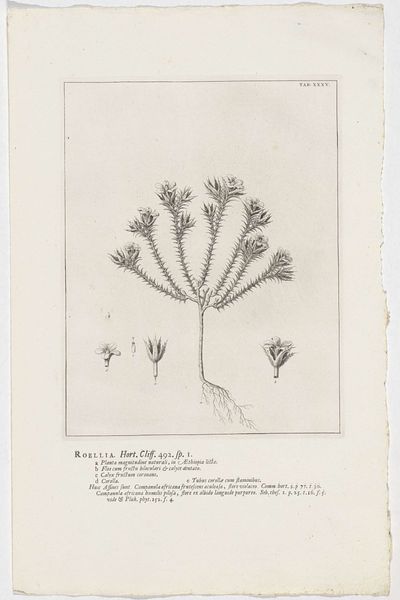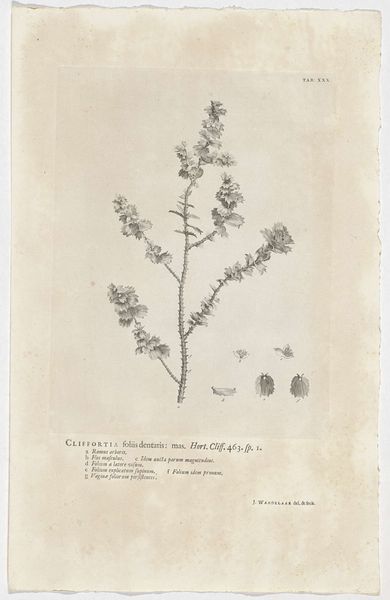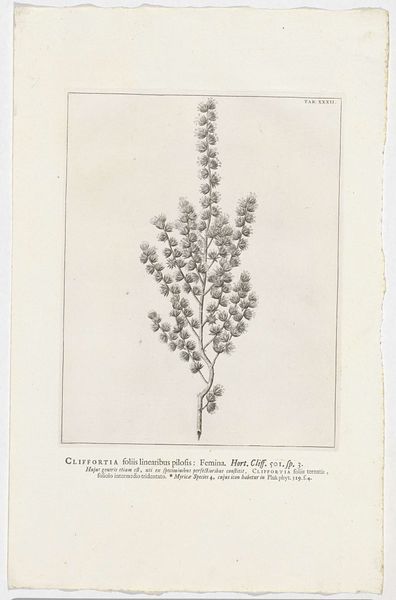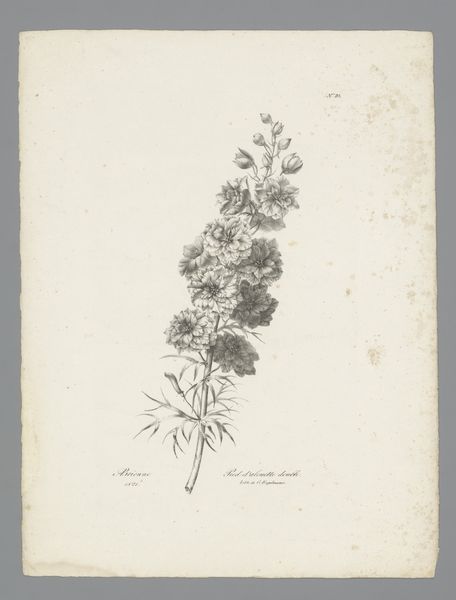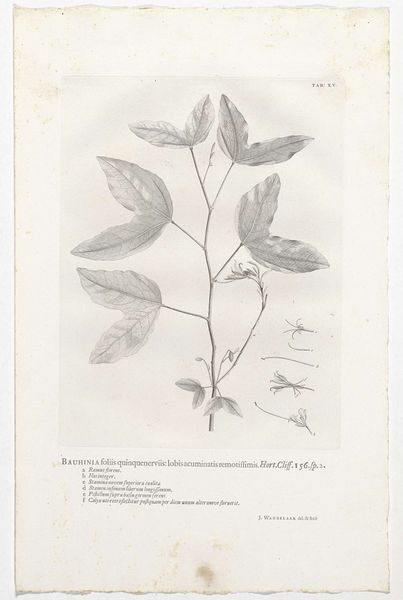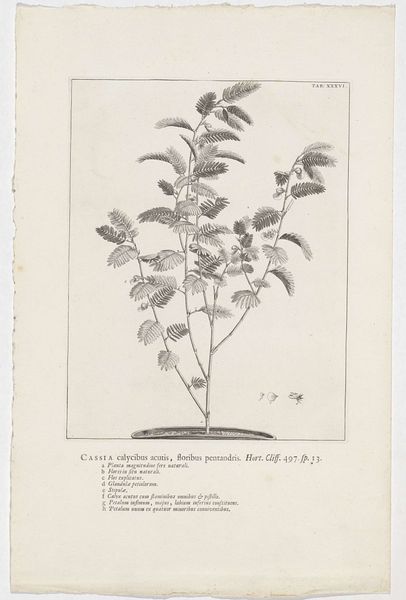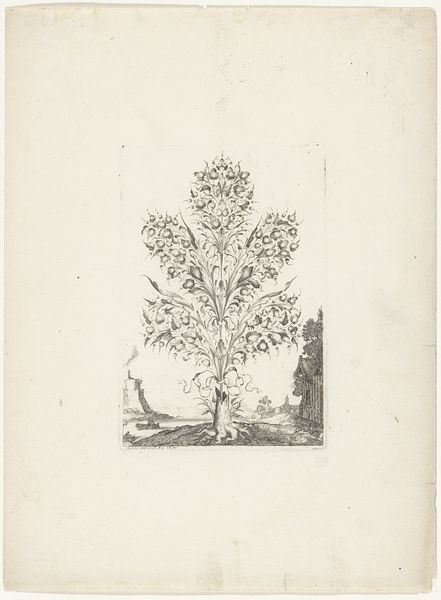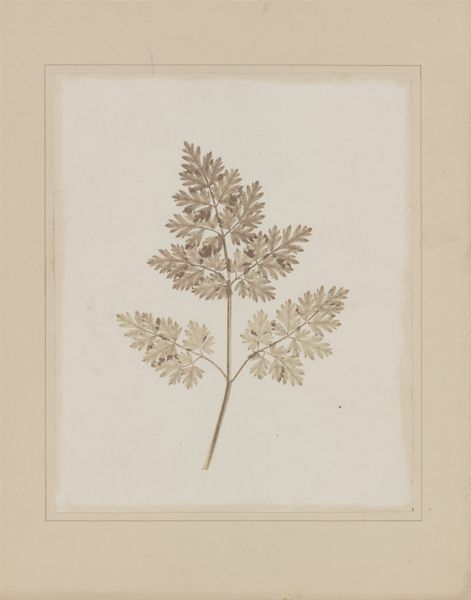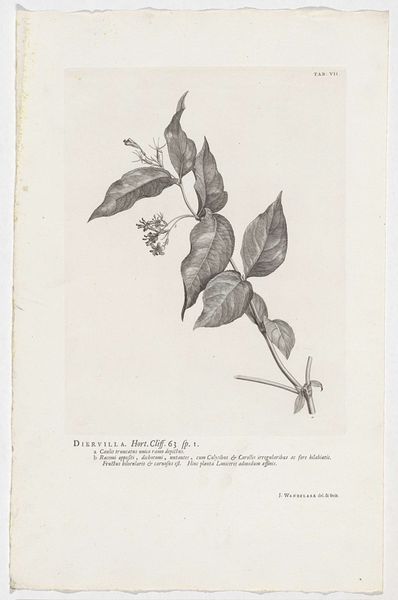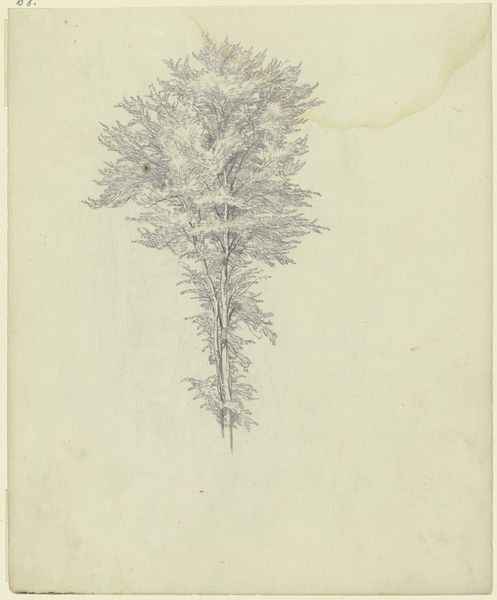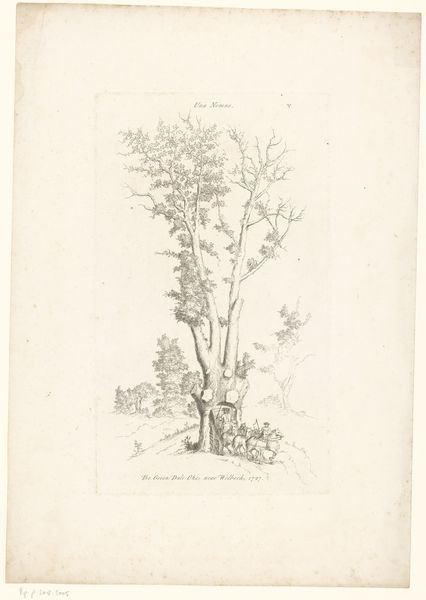
#
aged paper
#
light pencil work
#
pencil sketch
#
old engraving style
#
flower
#
personal sketchbook
#
ink drawing experimentation
#
plant
#
ink colored
#
sketchbook drawing
#
pencil work
#
sketchbook art
Dimensions: height 279 mm, width 218 mm
Copyright: Rijks Museum: Open Domain
Jan Wandelaar created this image of Cliffortia ruscifolia using engraving, likely in the first half of the 18th century. Visually, the artwork presents a symmetrical rendering of the plant, meticulously detailed, against a muted background, evoking a sense of scientific precision. The composition is vertically oriented, emphasizing the plant's structure, with the details of its leaves and stems carefully delineated. Wandelaar’s detailed engraving reflects a period where botanical illustration was a crucial intersection between art and science. The use of line and form serves to classify and communicate botanical information, but it also hints at broader ideas about organization. We might consider the semiotic function of such illustrations—how they act as signs within a system intended to convey knowledge about the natural world. Ultimately, the formal qualities of the work, from its linearity to its composition, reflect cultural and philosophical engagements with categorization. It also presents a structured view of nature that is not just aesthetic but deeply informed by the scientific values of its time.
Comments
No comments
Be the first to comment and join the conversation on the ultimate creative platform.
